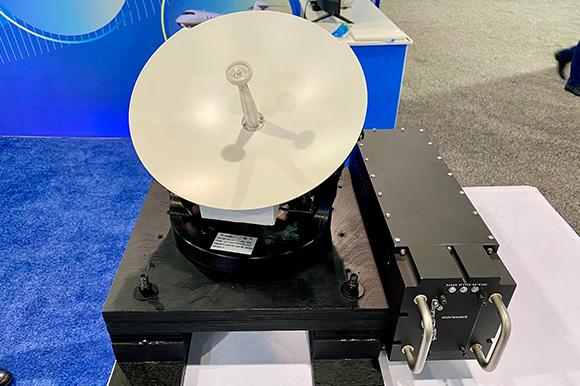
LAS VEGAS—Satellite communications hardware providers are developing next-generation terminals that will enable access to expanded service options from Viasat and its recently acquired Inmarsat business.
During NBAA-BACE, suppliers Honeywell Aerospace, Satcom Direct and Orbit Communication Systems announced satcom terminal developments to connect with existing and future Ka-band satellites operated by the Viasat-Inmarsat combination. In the future, an integrated satellite network will support broadband inflight connectivity.
Viasat, based in Carlsbad, California, acquired London-based Inmarsat in May. Viasat operates a network of Ka-band satellites that provide inflight connectivity for both airlines and business aviation; it has supplied its own GAT-5510 satcom terminal for business jets.
Inmarsat provided Ka-band connectivity for airlines and business jets supported by its Global Xpress satellite network. Honeywell provided JetWave terminals to receive Inmarsat’s Global Xpress Jet ConneX (JX) service for business aviation.
An expanded set of JX service options will be available to bizav customers using Viasat’s existing GAT-5510 terminal, as well as the three next-generation terminals from Honeywell, Satcom Direct and Orbit, Viasat said.
“For us to be able to deliver on our flexible service plans to our service partners, there are certain equipment features that enable that flexibility and performance on our network,” Claudio D’Amico, Viasat vice president for strategic market engagement, tells ShowNews. “Right now, we’re focused on some of the features that we’re bringing to the market with the initial terminals. The JX flexible plans are key for us because we think it brings a lot of value to the customers.”
At NBAA-BACE, Honeywell unveiled its next-generation JetWave X satcom terminal for super-midsize and large-cabin business jets, designed in collaboration with Viasat to connect to the latter’s Ka-band network, including future ViaSat-3 satellites and Inmarsat’s Global Xpress satellites.
Israel-based Orbit Communication Systems reported working with Viasat to enhance connectivity capabilities of its AirTRx-30 satcom terminal, initially to support existing and future Global Xpress satellites. Qualification and certification of the terminal is on track to begin shipping systems early next year, the company said.
An upgrade program will be made available for customers who have already installed the AirTRx-30 terminal to access new ViaSat-3 satellites in addition to Global Xpress satellites.
Satcom Direct (SD) and Viasat have agreed that SD’s tail-mounted Plane Simple Ka-band terminal “will connect immediately with the Global Xpress satellite constellation,” and be upgradeable to Viasat’s future Ka-band network, including new high-capacity ViaSat-3 satellites and next-generation Global Xpress satellites as they come on line, SD said.
SD will offer new Viasat Jet Connex service plans exclusively to SD-equipped operators once flight testing of the Plane Simple Ka-band terminal is completed and regulatory certification granted, expected in early 2024, SD said. Included in the new plans will be the first “Power by the Hour” option for Jet ConneX, enabling business jet operators to pay an hourly rate for inflight connectivity.
“One of the key features is upgradeability,” D’Amico says. “As the technology to combine the network becomes available in the near future, these terminals that are hitting the market now would have the capability to be upgraded. As the terminals evolve, they would have multinetwork capabilities . . . the ‘One Viasat’ experience that combines both Global Xpress and Viasat Ka.”
Separately, Viasat announced Oct. 12 that its ViaSat-3 Americas terabit-class Ka-band satellite, which experienced an antenna malfunction after its launch into space in April, remains functional and is expected to provide “less than 10%” of its planned throughput capacity. That limited capacity of ViaSat-3 Americas, the future addition of two more ViaSat-3 satellites, ground network mitigations and third-party bandwidth agreements should enable the company to meet its connectivity commitments to airlines and other mobility customers, Viasat said.
“We had an anomaly with one of the reflectors [and] it was made known publicly that we expect to get up to 10% of the capacity of that satellite, which is still significant because that was a one-terabit satellite,” D’Amico says. “We’re excited because it’s not going to require replacement, essentially, because we have enough assets between the capacity that we still have left on that satellite and the other satellites we have to support the demand.”





